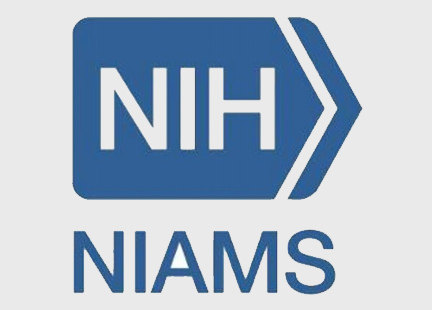
Spotlight on Research 2012
May 2012 (historical)
Baseline Bone Mineral Density Measurements Key to Future Testing Intervals
How often a woman should have bone mineral density (BMD) tests to track bone mass is strongly dependent on the BMD level found in her first measurement, according to new research supported by the National Institute of Arthritis and Musculoskeletal and Skin Diseases (NIAMS), the National Institute on Aging (NIA) and the former National Center for Research Resources (NCRR). Data from the Study of Osteoporotic Fractures, a long-term investigation of women age 67 or older, indicate that women with low initial BMD levels should receive BMD testing more often than those with normal or slightly low bone mass at first measurement. The research appeared in the New England Journal of Medicine.
Osteoporosis is marked by reduced bone mass and bone strength leading to an increased risk of fractures. It is the major underlying cause of fractures in postmenopausal women and elderly men. Often called a "silent disease," it usually progresses without any symptoms until a fracture occurs, or one or more vertebrae collapse.
Although health care professionals have long known that low BMD is an important risk factor for bone fractures, questions have remained about how often women’s BMD should be measured. The University of North Carolina, Chapel Hill’s Margaret L. Gourlay, M.D., M.P.H., the University of Minnesota’s Kristine E. Ensrud, M.D., M.P.H., and their colleagues analyzed data from approximately 5,000 older women who were followed for up to 15 years, and who received repeated BMD tests of the hip using a standard technology called dual-energy x-ray absorptiometry, or DXA. The scientists wanted to see how long it would take for the participants to go from either normal BMD or low BMD (osteopenia) to having osteoporosis (very low BMD). They found that 1) few women with normal baseline BMD developed osteoporosis over the 15 years, and 2) women with progressively lower BMD at baseline developed osteoporosis more quickly. Shorter testing intervals, say the scientists, are indicated for the women with lower initial BMD, although age should also be considered. Medicare currently pays for BMD testing every 2 years.
"Establishing baseline BMD is important for our aging population," says Dr. Gourlay, "and clinicians are not ordering enough BMD tests overall in women age 65 and older. Our new information, combined with that of other studies, can help us develop more useful BMD testing schedules that can favorably influence clinical outcomes by targeting testing to the patients at highest risk of fracture by BMD criteria."
The Study of Osteoporotic Fractures, supported by the NIAMS and the NIA, is a multicenter project that has been following more than 9,000 postmenopausal women since 1986, yielding comprehensive data about multiple risk factors for osteoporosis-related fractures. It has provided the foundation for developing ways to identify people at greatest risk for osteoporosis and fractures decades in advance, and thus has greatly aided disease prevention efforts.
Dr. Gourlay’s co-investigators in the study include researchers from the California Pacific Medical Center (San Francisco), the University of Pittsburgh, the University of Minnesota and the Minneapolis Veterans Affairs Health Care System.
The mission of the National Institute of Arthritis and Musculoskeletal and Skin Diseases (NIAMS), a part of the U.S. Department of Health and Human Services’ National Institutes of Health (NIH), is to support research into the causes, treatment, and prevention of arthritis and musculoskeletal and skin diseases; the training of basic and clinical scientists to carry out this research; and the dissemination of information on research progress in these diseases. For more information about the NIAMS, call the information clearinghouse at (301) 495-4484 or (877) 22-NIAMS (free call) or visit the NIAMS website at https://www.niams.nih.gov.
###
Gourlay M, et al. Bone-density testing interval and transition to osteoporosis in older women. NEJM 2012 January19; 366(3):225-33. PMID: 22256806.
